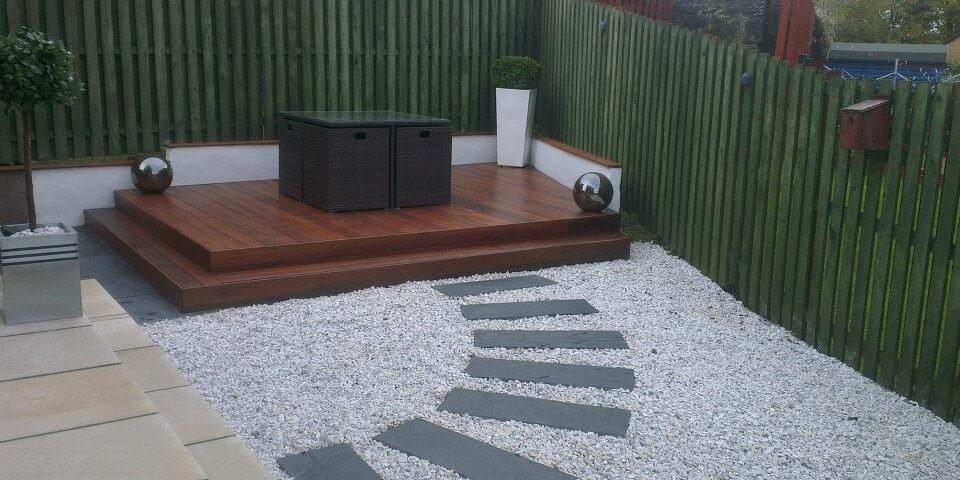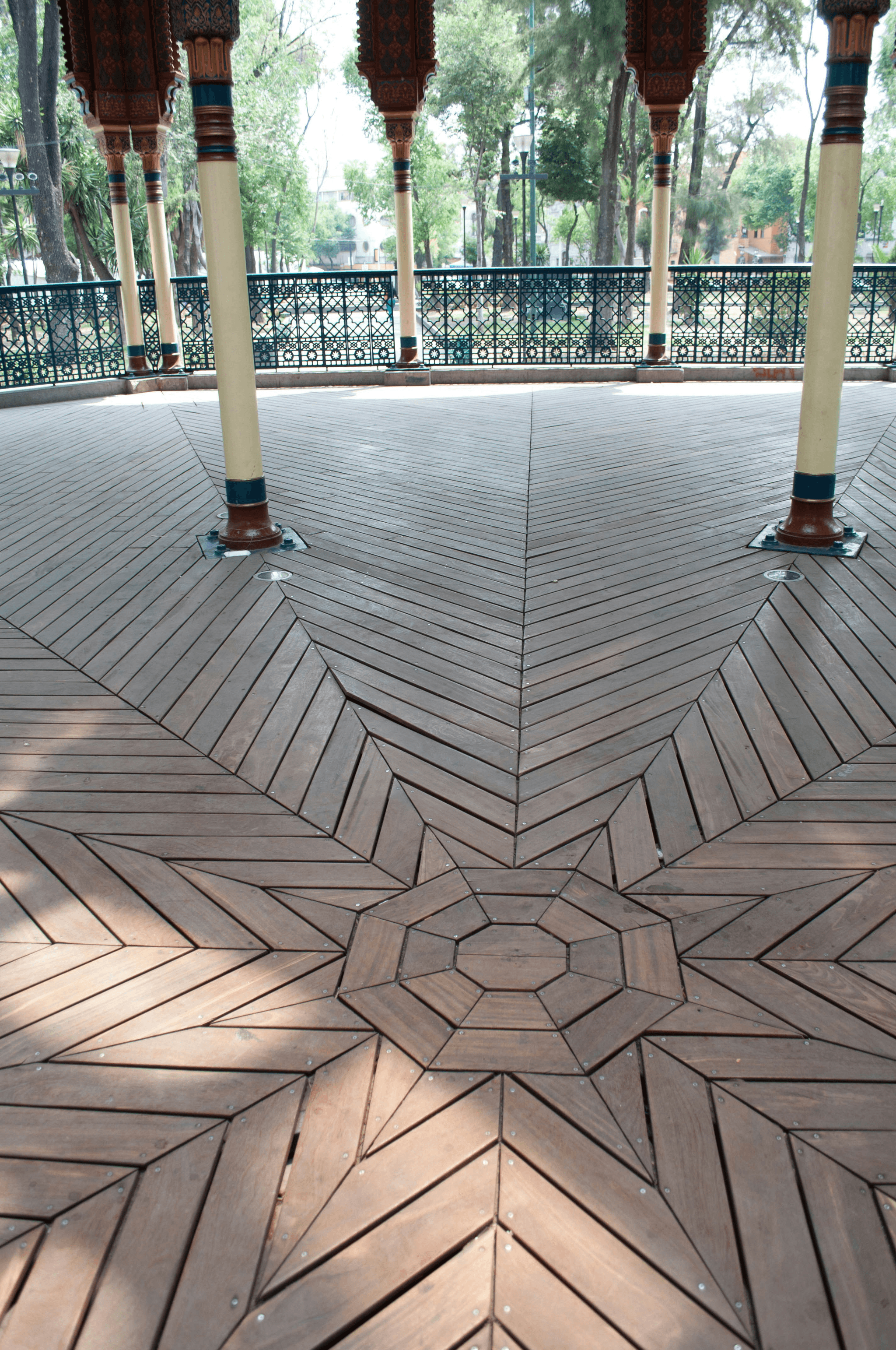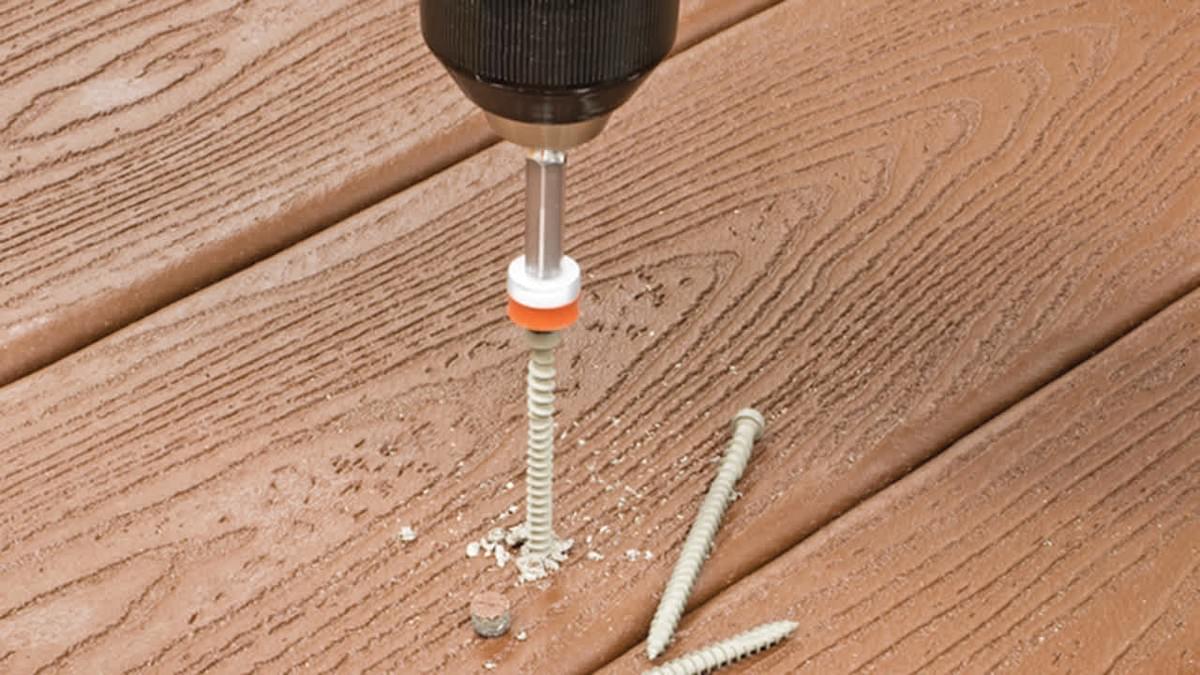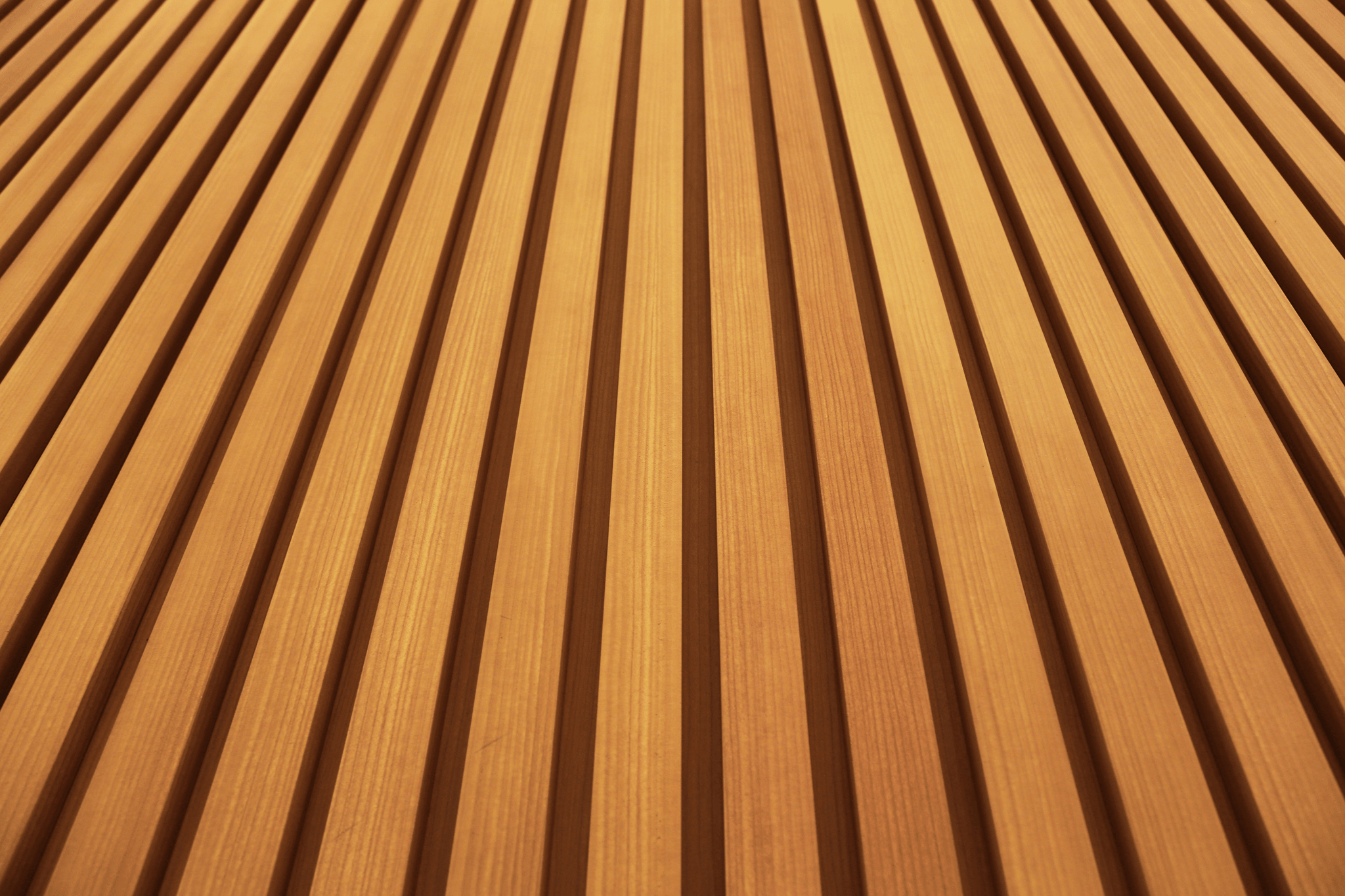Introduction
Grooved decking has gained popularity for its unique design and functionality, making it a key player in the ongoing debate of composite decking grooved vs square. Understanding these differences is essential to making an informed choice that aligns with your aesthetic preferences and practical needs.
Understanding Grooved Decking
Grooved decking features channels or grooves along its surface, allowing for easy installation of hidden fasteners that secure the boards without visible screws. This design not only enhances the visual appeal but also contributes to a smoother surface, reducing potential trip hazards compared to traditional square-edged boards. Composite wood decking boards are often used in grooved designs, combining durability with style for long-lasting outdoor spaces.
The Debate: Grooved vs Square
The discussion around composite decking grooved vs square often hinges on aesthetics versus practicality. While some prefer the streamlined look of grooved boards, others argue that square edges offer a classic appearance and easier maintenance options. Ultimately, this debate encompasses various factors such as installation ease, safety features, and overall deck performance under different weather conditions.
What You Need to Know
Before diving into your composite decking installation project, it's crucial to grasp the key differences between grooved and square options. Considerations like cost analysis, durability of materials like PVC decking versus composite wood, and maintenance requirements will influence your decision-making process. By weighing these factors carefully, you can select the ideal deck composite decking solution that best suits your lifestyle and budget.
Overview of Grooved Decking

Grooved decking has become a popular choice for homeowners looking to enhance their outdoor spaces. This type of decking features channels or grooves along its surface, which serve both aesthetic and functional purposes. Understanding the nuances of grooved decking can help you make an informed decision when considering options like composite wood decking boards.
Definition and Characteristics
At its core, grooved decking refers to boards that have been designed with longitudinal grooves running along their length. These grooves not only add visual interest but also facilitate water drainage, reducing the risk of slippery surfaces after rain. Moreover, the design allows for easier installation when using hidden fasteners, making it a favorite among DIY enthusiasts and professionals alike.
Common Materials Used
Composite wood combines recycled materials with traditional wood fibers, creating a durable option that mimics the look of natural wood without the high maintenance requirements. PVC decking offers even greater resistance to moisture and fading, making it an ideal choice for those living in wetter climates or seeking longevity in their deck composite decking.
Popular Brands Like Composite Decking Inc
Several brands have emerged as leaders in the grooved decking market, including Composite Decking Inc., Trex, and TimberTech. These companies offer a variety of products that cater to different tastes and budgets while ensuring quality and durability in their composite wood offerings. Whether you're leaning towards traditional aesthetics or modern designs, these brands provide ample choices for your composite decking installation needs.
Advantages of Grooved Decking

Enhanced Aesthetic Appeal
One of the most striking benefits of grooved decking is its enhanced aesthetic appeal. The grooves create a visually interesting pattern that adds depth and texture to your deck, making it a focal point in your outdoor area. Whether you opt for composite wood decking boards or PVC decking, the design options available can elevate the overall look of your home’s exterior.
Moreover, grooved boards provide a seamless appearance when installed correctly, allowing for clean lines and an elegant finish. This aesthetic quality is particularly appealing when considering composite decking installation, as the grooves allow for hidden fasteners that eliminate unsightly screw heads on the surface. Thus, if you're looking to impress guests or simply enjoy a beautiful outdoor space yourself, grooved decking is definitely worth considering.
Improved Traction and Safety
Safety should always be a priority when selecting materials for your deck, and grooved decking excels in this regard. The textured surface created by the grooves provides improved traction compared to traditional square-edged boards, which can be slick when wet or covered in debris. This aspect makes it especially beneficial in areas prone to rain or spills—after all, no one wants a slip-and-fall incident ruining their backyard BBQ!
Additionally, many composite wood options are designed with safety in mind; they often incorporate features that reduce splintering and enhance durability over time. When weighing the merits of composite decking grooved vs square designs, it's clear that choosing grooves not only enhances safety but also contributes to peace of mind while enjoying your outdoor retreat.
Easy Installation Process
Another significant advantage of grooved decking is its straightforward installation process. Many homeowners appreciate how easily they can tackle this project themselves without needing extensive carpentry skills or tools—especially with composite wood products designed specifically for ease of use! The grooves allow for hidden fasteners that simplify securing each board in place while providing a polished look at completion.
Furthermore, because the installation methods are often standardized across various brands like Composite Decking Inc., finding compatible materials becomes less daunting—a huge plus if you're considering different types of composite wood options! With clear instructions available online and resources dedicated to helping DIY enthusiasts navigate their projects smoothly, you'll find that setting up your new deck has never been easier.
Disadvantages of Grooved Decking

While grooved decking offers a range of benefits, it’s not without its drawbacks. Understanding these disadvantages can help you make an informed decision when comparing options like composite decking grooved vs square. Let’s dive into some of the key challenges associated with grooved decking.
Potential for Debris Accumulation
One significant issue with grooved decking is its tendency to collect debris in the grooves. Leaves, dirt, and other organic materials can easily get lodged in these grooves, creating a perfect environment for mold and mildew growth. This accumulation not only detracts from the aesthetic appeal of your deck composite decking but also requires regular cleaning to maintain its appearance and safety.
Maintenance Challenges
Maintaining grooved decking can be more labor-intensive compared to other options like composite wood decking boards or PVC decking. The grooves require special attention during cleaning; using a pressure washer or specific cleaning solutions may be necessary to ensure that all debris is removed effectively. Additionally, if you neglect routine maintenance, you might find yourself facing costly repairs down the line due to deterioration.
Comparisons with Composite Decking Options
When considering composite decking installation, it's essential to weigh the pros and cons of different designs—grooved vs square being a primary consideration. Square-edged boards may offer easier maintenance and less debris accumulation than their grooved counterparts. Furthermore, while both options provide durability and longevity, the choice between them often comes down to personal preference regarding upkeep versus aesthetic appeal in your outdoor space.
Composite Decking: Grooved vs Square

Structural Differences
The primary structural difference between grooved and square composite wood decking boards lies in their design and fastening methods. Grooved boards are engineered with a notch that accommodates clips or screws, allowing for seamless installation without visible hardware. On the other hand, square-edge boards necessitate traditional fastening techniques, which might require more effort during composite decking installation but can offer a more classic appearance.
Durability and Longevity
Both grooved and square composite decking options boast impressive durability due to their resistance to moisture, insects, and decay compared to traditional wood materials. Ultimately, both styles provide excellent longevity; however, factors such as climate and maintenance practices will influence their lifespan in your specific setting.
Cost Analysis
Cost is often a decisive factor when considering composite wood decking options; therefore, understanding the financial implications of grooved vs square is essential. Generally speaking, grooved boards may come with a slightly higher price tag due to their advanced design features and ease of installation with hidden fasteners. However, considering long-term savings from reduced maintenance needs and enhanced durability can make either option worthwhile investments for homeowners looking at deck composite decking solutions.
Installation Tips for Grooved Decking
Installing grooved decking can be a rewarding DIY project, especially when you understand the tools and steps involved. With the right preparation, your deck can become a beautiful extension of your home, whether you choose composite wood decking boards or PVC decking. Let’s dive into what you need to know for a successful installation.
Tools Required for Installation
To kick off your composite decking installation, you'll need some essential tools. A circular saw is crucial for cutting the composite wood decking boards to size, while a drill will help secure them in place with screws designed for grooved profiles. Additionally, having a level and measuring tape on hand ensures that everything aligns perfectly—because nobody wants a wobbly deck!
Step-by-Step Guide
Starting with the foundation is key; ensure your frame is sturdy and level before laying down any composite decking boards. Begin by spacing the grooved boards evenly, securing them with hidden fasteners that fit snugly into those grooves—this not only enhances aesthetics but also minimizes visible screws on the surface of your deck composite decking. After laying down all planks, double-check everything for alignment and make any necessary adjustments to achieve that flawless finish.
Maintenance Recommendations
Once you've installed your grooved decking, maintenance becomes paramount to its longevity and appeal. Regular cleaning is essential; use a mild detergent and water solution to wash away dirt or debris that may accumulate in the grooves over time—this helps maintain traction and safety on your deck. Additionally, applying a protective sealant every few years can help preserve the color and integrity of your composite wood while prolonging its life against weather elements.
Conclusion

Understanding the differences in materials, installation processes, and maintenance requirements will help you make an informed decision that suits your lifestyle. Whether you lean towards composite wood decking boards or other materials like PVC decking, knowing what each option offers is crucial.
Choosing the Right Decking for You
Selecting the right decking involves considering various factors such as style preference, durability, and budget constraints. If you're torn between composite decking grooved vs square options, think about how each will fit into your overall design vision. Remember that while grooved boards may offer easier installation with hidden fasteners, square edges can provide a more traditional look that some homeowners prefer.
Weighing Cost Against Benefits
Cost is often a decisive factor when choosing between different types of composite decking. While initial expenses for composite wood may be higher than traditional lumber, their longevity and low maintenance requirements often justify the investment over time. It’s essential to evaluate not just the upfront costs but also long-term savings associated with reduced maintenance and replacement needs when considering deck composite decking options.
Sustainable Options in Decking Solutions
Sustainability is increasingly important for many homeowners looking to deck their outdoor spaces responsibly. Many brands now offer eco-friendly composite wood options made from recycled materials that reduce environmental impact without sacrificing quality or aesthetics. When comparing choices like PVC decking versus traditional wood or even composite decking installation methods, consider how each aligns with your values regarding sustainability.
